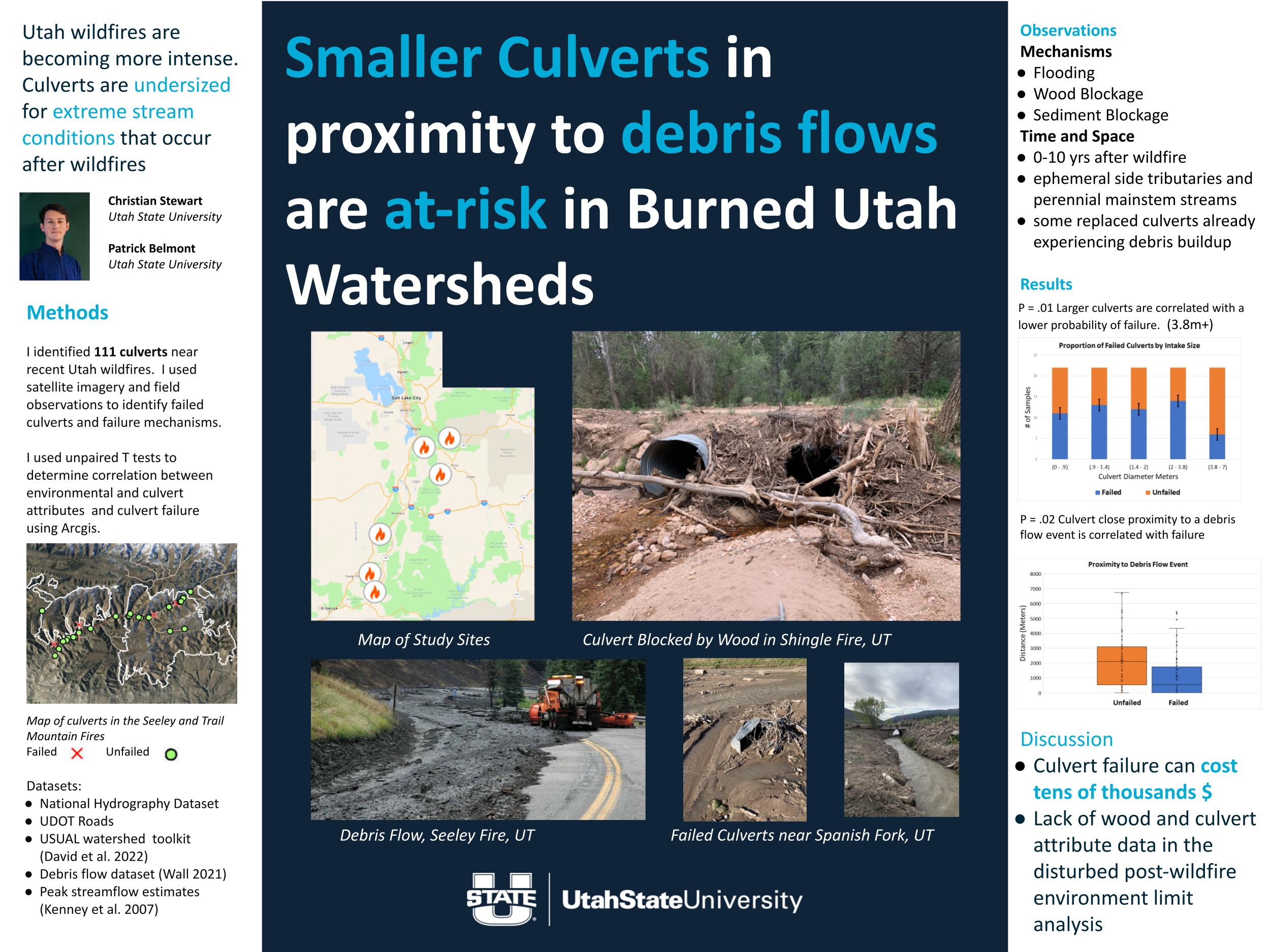Presenter Name: Christian Stewart
Description
Wildfires are increasing in intensity and size in Utah. Post wildfire landscapes exhibit significant increases in surface runoff, particularly over the first two to three years. Increased runoff from wildfire leads to sediment output of the watershed. Wildfires induce colluvial debris flows, a fast moving mixture of soil, water and rock that travels down a slope under the influence of gravity. These debris flows are a primary source of sediment and wood in burned watersheds.
Excessive large woody debris and sediment entrapment by culverts can cause culvert failure at flows lower than engineering considerations account for. There are 57,000 culverts throughout Utah that are at risk of costly failure. Fire intensity, hydrological change and increased infrastructure are three factors that suggest a future increase in culvert failure from wildfire. Verifying a spatial relationship between the size and spatial distribution of culverts and debris flow events allows agencies such as UDOT and USFS to know which transportation infrastructure to prioritize.
Field observations and GIS analysis confirm that distance from debris flow events and culvert size are both negatively correlated with failure probability. Culverts are undersized for post wildfire debris flows, as shown by high failure rates. The next step in the research is to determine whether or not it is worth the cost to protect culverts statewide from relatively unlikely wildfires or to continue to replace culverts that have already failed.

